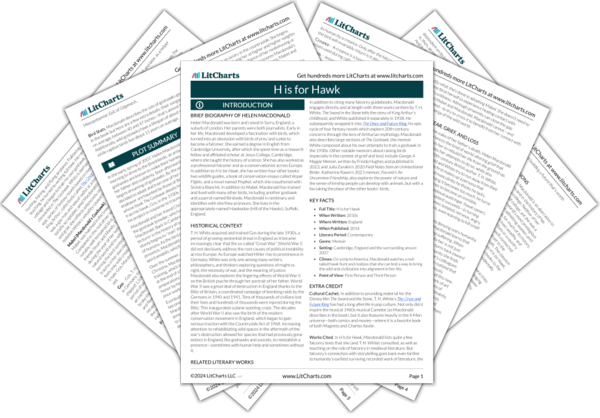In many ways, Helen Macdonald is an aberration in the history of falconry and in the history of her Cambridge University college. Neither of her working-class parents ever attended college, yet she was a lecturer for three years at one of the world’s most prestigious universities—one that didn’t even start admitting women until the middle of the 20th century. Likewise, for much of its history, falconry was a sport for aristocratic (or at least wealthy and well-connected) men. And Macdonald still lives in a country where hunting is a sport for the landed and well-connected more than the common person—in stark contrast to the experience of her American friends Erin and Scott. The classism and sexism of falconry (and English history) haunt H Is for Hawk, in subtle ways, from the language used in falconry books to the legal ramifications of Macdonald’s hawk, Mabel, accidentally hunting on private property.
Macdonald quietly points out the ways in which the hierarchies of class and gender are both arbitrary and harmful. Belonging to a society’s upper crust certainly conveys wealth and power but offers no guarantee of moral superiority—the Nazi party, for instance, drew from the practice and iconography of falconry to justify Aryan supremacy. Likewise, the ways in which falconry experts of various eras have described goshawks as women say more about the concerns of the era than about the birds—or the female members of humanity—themselves. But the book includes hopeful evidence that falconry—and by extension, society—can overcome such biased history. The modern sport that Macdonald describes can be enjoyed by almost anyone, even suburban dads attending fall festivals with their kids. And in exposing these barriers for what they are—artificial boundaries established to protect the privilege of those at the top, the book argues eloquently for the creation of more welcoming spaces.
Social Divisions ThemeTracker

Social Divisions Quotes in H is for Hawk
As a child I learned to love falconry’s disconcertingly complex vocabulary. In my old books every part of a hawk was named: wings were sails, claws pounces, tail a train. Male hawks are a third smaller than the female so they are called tiercels, from the Latin tertius, for third. Young birds are eyasses, older birds passagers, adult-trapped birds haggards. Half-trained hawks fly on a long line called a creance. Hawks don’t wipe their beaks, they feak. When they defecate they mute. [...] On and on it goes in a dizzying panoply of terms of precision. The terms were precise for a reason. Knowing your falconry terminology attested to your place in society. […] But the words weren’t about social fear when I was small. They were magic words, arcane and lost. I wanted to master this world that no one knew, to be an expert in its perfect, secret language.
Chalk landscapes do this to me; bring an exhilarating, on-tiptoe sense that some deep revelation is at hand. This makes me feel guilty. There’s a long vein of chalk-mysticism buried in English nature-culture, and I know that what I’m feeling, standing here, partakes of it. I’m guilty because I know that loving a landscape like this involves a kind of history that concerns itself with purity, a sense of deep time and blood-belonging, and assumes that these solitudinous windswept landscapes are finer, better, than the landscapes below.











